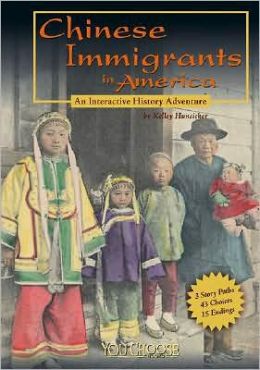|
| |
Utilizing an Authentic Reading Text as a Supplemental Classroom ToolTom Osgood, Pui Tak Center, Chicago  In the course of teaching ELLs, there may be times when you want to add something to the standard classroom textbook, or to take a break from it and present material in a different format. Recently in my classroom of adult Chinese high-intermediate learners, I wanted to present the students with additional in-depth learning opportunities that weren’t provided in the regular text. I thought a fiction book might offer a nice change of pace for students, and would provide enough material for me as a teacher to create learning activities that addressed all four skill areas. In the course of teaching ELLs, there may be times when you want to add something to the standard classroom textbook, or to take a break from it and present material in a different format. Recently in my classroom of adult Chinese high-intermediate learners, I wanted to present the students with additional in-depth learning opportunities that weren’t provided in the regular text. I thought a fiction book might offer a nice change of pace for students, and would provide enough material for me as a teacher to create learning activities that addressed all four skill areas.Once I had decided on the genre of book, I moved on to selecting the book I wanted to use. For the type of learners I had in my class, it was important that the material was authentic, relevant, and contained vocabulary with descriptive nouns, adjectives and verbs that were more transferable to any number of efferent or aesthetic texts they might read in the future, but fewer idiomatic expressions and phrases that cause unnecessary confusion. I could have chosen from any number of leveled readers that are available, and those might have been a good choice in another setting, but because my students were culturally very homogeneous, and at the same time possessed a variety of reading levels, I decided to use the book Chinese Immigrants in America: An Interactive History Adventure (Hunsicker, 2008). This short book (105 pages) is one of a series of "You Choose" books published by Capstone Press. The book is divided up into a series of small plot sections that end with a choice that the reader has to make. The reader (or in my case, the class) chooses what to do and then finds out how that decision plays out. The story eventually ends in a positive or negative outcome, and can be started over from the beginning to make a different choice. I thought this format worked well for my class because it encouraged student participation as we went along, and it also broke up the story into small chunks that could be easily digested by the students and reviewed by the instructor. Also, since my students are all Chinese immigrants, the topic was instantly relatable to them. And though the story is in the historical fiction genre about Chinese immigrants to San Francisco in the 1850s, the immigration journey is familiar enough for them to make a connection. Another nice aspect of this story is that it is told from a 2nd-person perspective. This automatically enables the student to identify with the storyline as they read, “You…” in each sentence of the book. The text of the book corresponds to a 3rd/4th-grade reading level, which translates to a high-basic/low-intermediate level on the Fry Graph of estimated readability. This would be somewhat low for a good portion of my class as a pure reading text, but I chose primarily to read one chapter at a time to my students. In this way I used the book first as a tool for listening. Initially I would read a few pages to students and have them take notes and write down words that were unfamiliar to them. (This also had the happy side benefit of rendering their dictionaries useless in this exercise, as they didn’t have the spelling of unfamiliar words in front of them to look up.) I would then have them compile their words page by page, writing them down on the board in the order they occurred in the book. I then used this word list to piece together the plot of the story to ensure student understanding. Once you have the word list created, it is something you can utilize further if you so choose through activities such as word webs, Venn diagrams or cloze exercises. There are a lot of great options for extended-writing activities related to a book that is relevant to your students’ experience as well. In the story an older Chinese man offers advice to a new immigrant, so I led the students in a writing activity where they were asked to give advice to a new immigrant in Chicago’s Chinatown. The students considered what advice would be the most important for such a person to know, and then wrote a letter using suggestion phrases we had worked on previously in our regular textbook. This allowed them to be the experts, to consider what they had learned during their time in the U.S. and to prioritize the advice they would give to someone else. The added learning dimension created by the use of this book in class was so positive that I am exploring the next one we are going to read and explore together. As I do, I’m going to filter my choice through the following question grid:
References Hunsicker, Kelley. 2008. Chinese Immigrants in America: An Interactive History Adventure. Capstone Press. | |
| The ITBE Link - Summer 2013 |